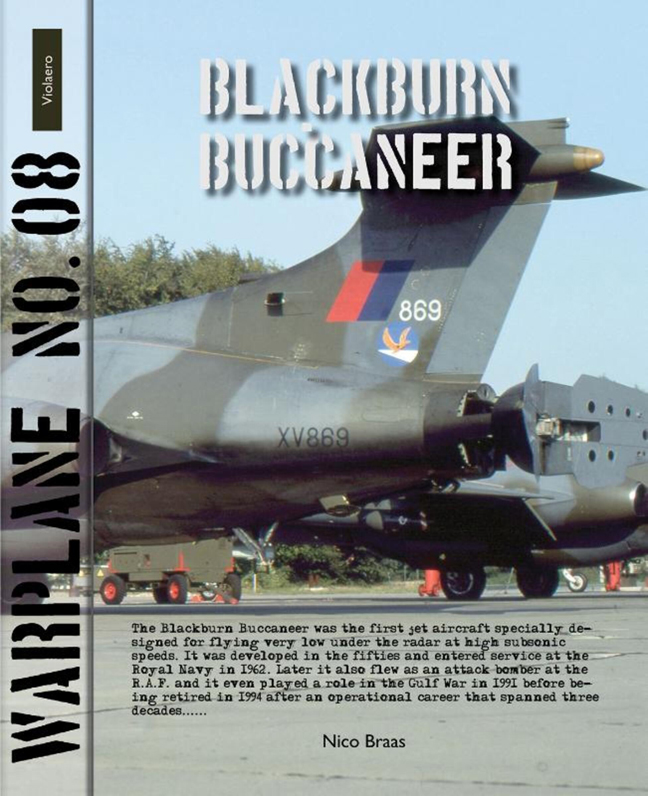Book contents
- Frontmatter
- Introduction
- In service at the royal navy
- Buccaneer Photo-Recce crate
- South African nuclear bombers
- In service at the R.A.F. … at last
- Martel Missile (AJ.168) (AS.37)
- WE177 nuclear bomb
- The Buccaneer goes to war
- Museum piece
- Final phase out and retirement
- Sub-versions S.2:
- Accidents and Incidents
- Survivors
- Technical Description
- References
- Credits
The Buccaneer goes to war
Published online by Cambridge University Press: 20 February 2024
- Frontmatter
- Introduction
- In service at the royal navy
- Buccaneer Photo-Recce crate
- South African nuclear bombers
- In service at the R.A.F. … at last
- Martel Missile (AJ.168) (AS.37)
- WE177 nuclear bomb
- The Buccaneer goes to war
- Museum piece
- Final phase out and retirement
- Sub-versions S.2:
- Accidents and Incidents
- Survivors
- Technical Description
- References
- Credits
Summary
Lebanon crisis 1983 - Operation Pulsator:
The first time the Buccaneer saw action was in the Lebanon crisis of late 1983 when Druze armed forces threatened to overthrow the existing government. UN forces were sent in to prevent things going out of control into a civil war. These forces included 100 British troops. To give their soldiers air support six Buccaneers from no. 12 and 208 squadron were based at Cyprus under the mission name Operation Pulsar. They were armed with laser guided bombs and a Pave-Spike laser for target illumination. The aircraft were also fitted with chaff to disturb SAM radar systems. Eventually no bombs were dropped and the Buccaneers only let their presence known by making low-pass flights over Beirut.
Gulf War 1991 - Desert Storm:
In the early nineties the Buccaneer was in fact already scheduled for final retirement. However, things went different when Iraq occupied Kuwait with as result a military intervention known as Operations Desert Shield and Desert Storm. Although the U.K. Ministry of Defence did not show initially any interest to employ the Buccaneer in this conflict, it was the only operational aircraft that could be used for providing target laser illumination for the new Paveway II laser-guided precision bomb. Then, on 23 January 1991 came the order to prepare a dozen Buccaneers for active duty in the Gulf war as target laser illuminators for the Tornado bombers. For this Middle East detachment the best aircraft were selected from R.A.F. no. 12 and 208 squadrons and from no. 237 OCU. In the shortest possible time, a new radio was fitted (Hawk Quick II secure radio’s), a new IFF (Identification- Friend-or-Foe) system, a pair of AIM-9L Sidewinder missiles for self-defence and laser equipment for the Paweway II precision bombs. They were also sprayed in a desert scheme to reduce visibility (colour ‘Desert Pink’). On the vertical tails single-letter identifications were placed for each Buccaneer; respectively S, L, O, G, U, N, R, E, A, P, I and T. It was no coincidence that these letters formed the words SLOGUN and REAPIT!
Except for the camouflage, most of these Buccaneers were also fitted with WW-II style pin-up paintings on the right fuselage side below the cockpit. These paintings were sponsored by a number of Whisky brands. Also, the name of the company was painted near the pin-up.
- Type
- Chapter
- Information
- Blackburn Buccaneer , pp. 34 - 37Publisher: Amsterdam University PressPrint publication year: 2014



